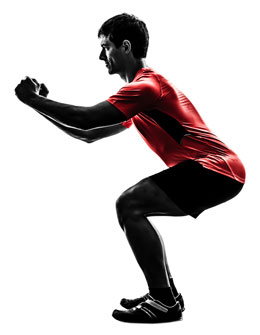- Like
- SHARE
- Digg
- Del
- Tumblr
- VKontakte
- Flattr
- Buffer
- Love This
- Save
- Odnoklassniki
- Meneame
- Blogger
- Amazon
- Yahoo Mail
- Gmail
- AOL
- Newsvine
- HackerNews
- Evernote
- MySpace
- Mail.ru
- Viadeo
- Line
- Comments
- Yummly
- SMS
- Viber
- Telegram
- JOIN
- Skype
- Facebook Messenger
- Kakao
- LiveJournal
- Yammer
- Edgar
- Fintel
- Mix
- Instapaper
- Copy Link
 First, the bad news: injuries are part of life, especially for active people who play sports and work out regularly.
First, the bad news: injuries are part of life, especially for active people who play sports and work out regularly.
Now, for the good news: There are things you can do to minimize your risk of getting injured, and one of them is exercising both regularly and intelligently.
Regular exercise improves the body’s posture and alignment, which helps increase movement and prevent injury.
With all these in mind, we recommend some exercises that you will find helpful.
Core Exercises
These exercises will help minimize your risk of getting injured as they strengthen your core muscles, which serve as the starting point for most of the large movements you do, like running, jumping, crouching, bending and throwing. It is therefore vital that you strengthen this link, as Mayo Clinic states that a weak core will make you vulnerable to poor posture and muscle injuries.
Some core exercises you can do are the following:
Turkish Get-Up
This total body workout works your entire core, but it is extremely hard to do correctly. So, here is a video to help you out:
Floor Bridge
We recommended this exercise in our ‘Best Core Exercises’ post, and here is the video to help you perform the exercise.
Plank
The plank is a fundamental core exercise that seems relatively easy, as you will see in the video below. But perform for an extended duration and you will feel the strain.
For Your Shoulders
Shoulders are easily injured, with impingement and rotator cuff injuries among the most common sources of shoulder pain. To minimize your risk of a shoulder injury, you can do these exercises:
Side-Lying External Rotation
The side-lying external rotation is a shoulder saver, as it strengthens the rotator cuff, the part of the body that stabilizes the movements of the shoulder. Here is a tutorial you can use as a guide:
Reverse Fly
Another shoulder saver is the reverse fly as it strengthens the rotator cuff and increases its flexibility. It comes as no surprise then that tennis pro and personal trainer Jason Greenspan recommends this same exercise to Well + Good. Greenspan’s version, though, is done on a Pilates ball.
Lower Extremities
The lower extremities are very vulnerable to injury, with the knees and ankles being the most at risk. These exercises will help injury-proof your lower limbs:
Squats
Squats work every part of the lower extremities, notably the quads and hamstrings. Stronger quads and hamstrings, in turn are less susceptible to muscle strains and pulls.
Lateral Band Walks
Strong hips help keep the knees from twisting or bending awkwardly, both of which can result to that dreaded ACL tear. One easy but effective exercise to strengthen the hips is the lateral band walk, a variation of which is being performed by NBA superstar LeBron James in the 0:21–0:27 mark of the video below. Wonder no more why The King has never had a knee injury — major or otherwise — in his entire career.
Resisted Eversion
This exercise strengthens and stabilizes the structures surrounding the ankle, along with the Achilles tendon.
Final Thoughts
You must bear in mind that there is no truly 100% injury-proof body, especially since freak accidents can happen. Golfer Rory McIlroy, who takes pride in his training and overall fitness, found this out the hard way in 2015. The BBC reported that McIlroy totally wrecked his ankle, rupturing a ligament playing football with friends. McIlroy is featured in a Ladbrokes article titled ‘10 Famous Sports Injuries’ due to his ankle injury, as his misfortune came at a most inopportune time. He missed out on a chance to defend his title at The Open Championship before struggling to a 17th place finish in the PGA Championship.
The below video shows part of McIlroy’s treatment, and like the resisted eversion exercise he is slowly increasing the movement and weight put on the ankle. The Northern Irishman managed to recover from the injury, winning 4 non-major tournaments since his injury. This shows how exercise not only prevents injury, but also helps with recovery. McIlroy is rare amongst golfers, in that he follows the creed that we put forward in ‘What You Need to Know about Cross-Training for Golfers’: that golfers need to focus on all manners of training not just those specific to their sports.
Exercising regularly and intelligently is one of the keys to minimizing your risk of injury, so it is high time that you start doing it now. You can thank us later.
